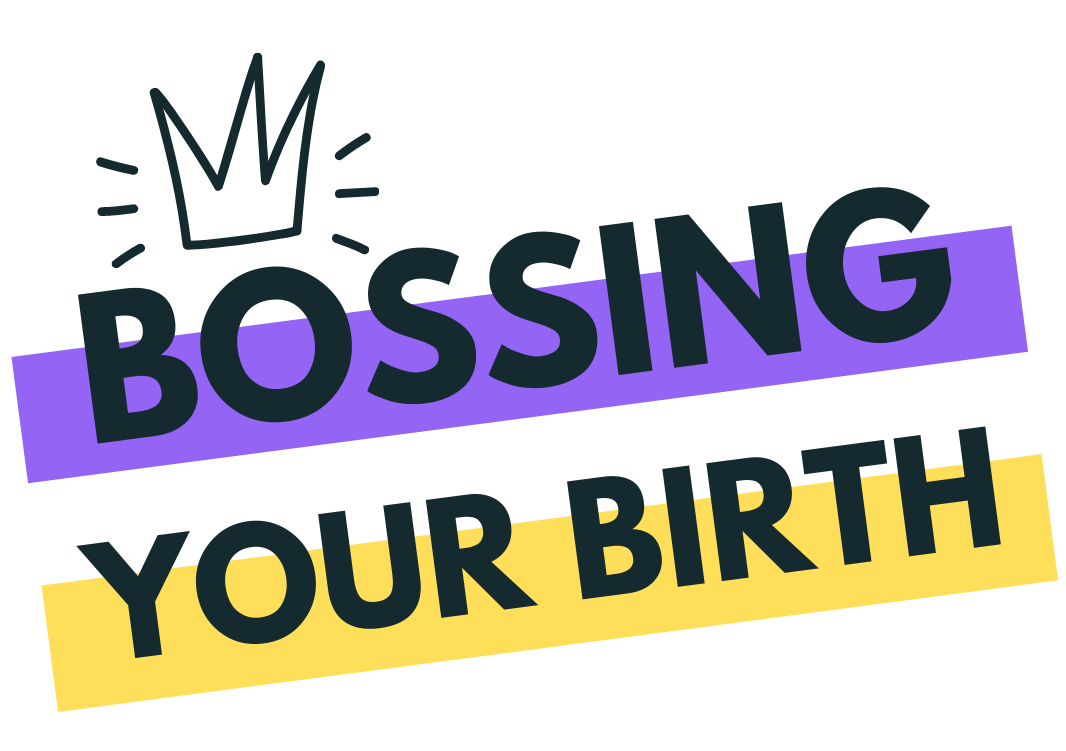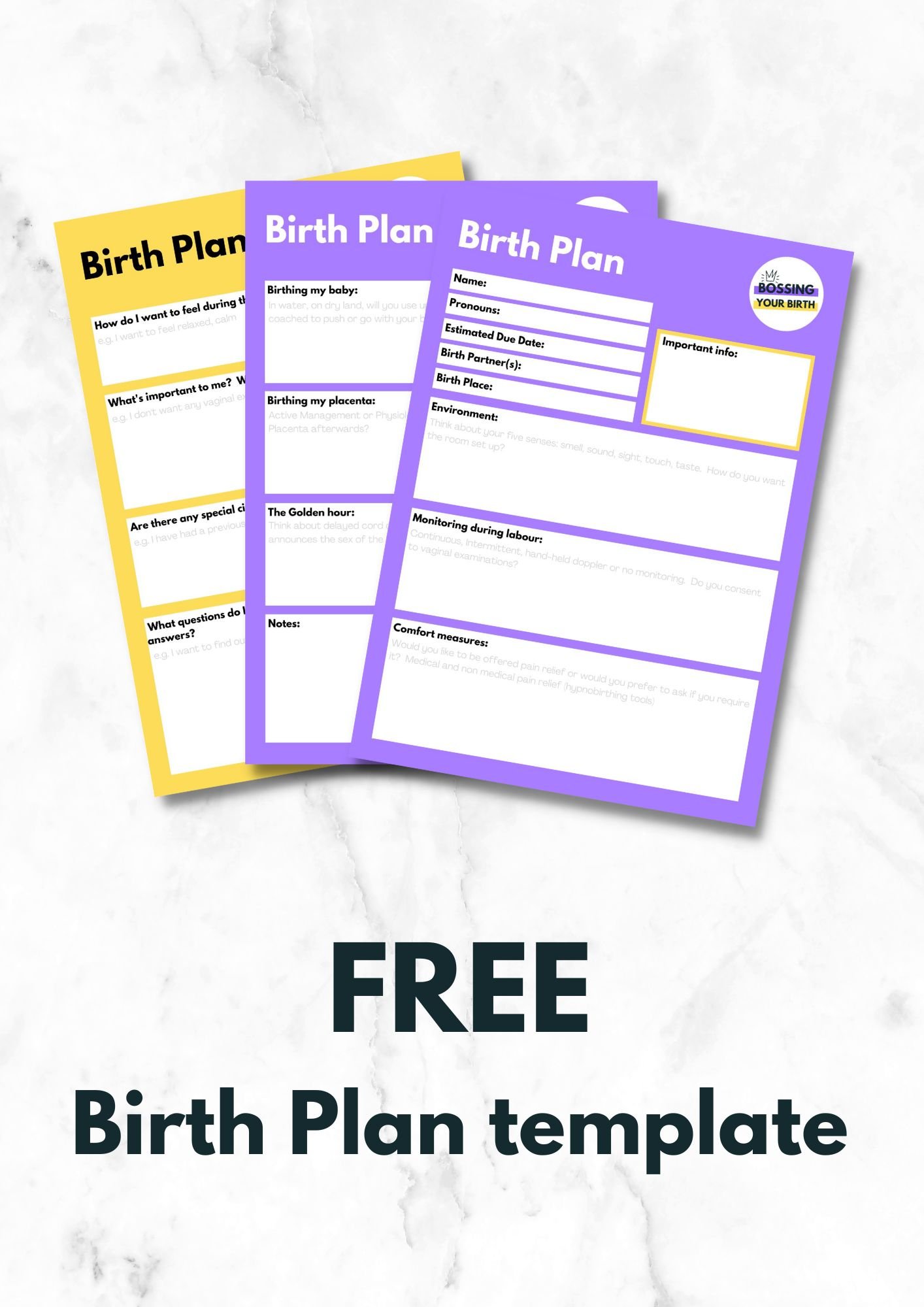5 simple steps to writing an NHS friendly birth plan
I think writing a birth plan is a critical part of your birth prep, whether you're birthing at home, in an NHS hospital or at a birth centre. But I know from my own experience in pregnancy that it can be hard to know where to start. That's why I'm sharing my easy 5-step guide to writing yourself a kick-ass, NHS friendly birth plan. Let's get started!
What is a birth plan?
Birth plans (or birth preferences if you like) are definitely worth doing as they can be a fantastic tool to communicate your wants and needs for your baby's birth. The process of making a birth plan will help you gain a greater understanding of your options and help you to prepare for a range of different birth scenarios.
Your birth plan will help your care providers or doctors know who you are and what you would like to happen during the birth, this is really important as you don't want them asking you a million questions in the middle of labour! Making a birth plan ahead of time with your partner can also help them feel more comfortable and knowledgeable, so they can give you the best support. Knowing that they are on the same page about your birth wishes can help you feel more at ease and feel prepared.
Why should I write a birth plan?
I'm sure you've heard people say that their birth plan "went out the window" and you shouldn't bother with one. For the most part, this tends to happen when people haven’t considered the different range of scenarios that can play out during birth. For example:
deciding to transfer from home to the hospital
choosing an induction
choosing an unplanned C section
feeling like you want more pain relief
being told something unexpected as labour progresses
I believe that preparing for the "what ifs" is a sensible thing to do. That way you will be prepared for whatever birth throws your way. Let me put it like this...If you were going on a long car journey, you'd have some form of plan for your route. You might not write it down or look it up on google maps like me (nerd alert!), but you'd have an idea of where you want to be going. You wouldn't just jump in your car and hope for the best!
And what if something happened along the way? A road closure, a delay or maybe you just don't like a particular road. You'd look at your map and take a diversion along a different road. It might mean you get to your destination a bit slower or from another direction, but you'd get there eventually.
Birth plans aren't about carving your wishes in stone and deciding that's what MUST happen. It's about giving you and your care providers some direction...a map. Sometimes even the best-laid plans need to change, and that's ok.
Being informed about various medical options and interventions such as inductions and C Sections will help you make the most informed decisions for you. Because most of us don't always make decisions we're happy with in stressful situations. By writing a birth plan, you are giving yourself the best chance of feeling in control and positive about your birth experience, no matter what happens.
Where do I start writing a birth plan?
Step 1: Think about what's important to you when giving birth
The first step when you start to write a birth plan is to grab a pen and paper and ask yourself these questions:
How do I want to feel during my baby's birth?
What's really important to me?
What are my 'non-negotiables'?
What special circumstances do I need to consider? (for example, any specific medical history to take into account).
I think it's worth noting all of this down first, so you have a solid understanding of what you want from your childbirth experience.
TOP TIP: Ask your birth partner to do the same and compare your answers! Discuss where you have different answers and find out why you think differently.
Step 2: Explore your options for labour and birth
This is the really fun part! Here you want to decide:
Where you want to give birth. i.e. at home, in a hospital?
How you want your environment to be. i.e do you want the lights dimmed, specific music playing or your favourite blanket close by.
Who you want with you. i.e birth partners, specific family member, a doula, student doctors.
How you want to give birth. i.e. vaginal birth on dry land, in a birth pool, planned C section.
What you want in terms of pain relief or pain management.
What your preferences are when it comes to monitoring baby's heart rate. i.e. a continuous monitor strapped across your bump, intermittent monitoring, none at all.
What you do/don't want in the event of an emergency.
What you want to happen once baby is born. i.e. cutting the umbilical cord, skin to skin contact with your baby, administering vitamin K, birthing your Placenta.
How you want to feed your new baby.
That might seem like a lot to think about, so tackle one question at a time. There are so many ways to find out about all of this stuff - both free and paid options. Antenatal classes are a great way to learn more about birth. Most Hypnobirthing teachers have social media accounts with free birth information. There is also a plethora of birth-related books and websites where you can find great evidence-based information. Speaking to other parents face to face or via Facebook groups can open your eyes to new options you might not have known about. You can also talk to your midwife about what the local options are in your NHS trust.
Step 3: Write Birth Plan A
Once you've done your research and made some decisions it's time to bring everything together. Write Plan A as your ideal scenario. This plan includes everything you would like to happen in your dream birth. Don't hold back here. If you've always wanted a water birth at home surrounded by twinkly fairy lights, then write it down! This is your chance to plan for the birth of your dreams. The information in this plan will be important in the next steps.
Your birth plan can be in whatever format suits you. It doesn't have to be written in a special form and it really doesn't have to be a huge essay. In fact, it will probably be much easier for your midwife if it's concise and to the point. A more succinct birth plan will also be easier for your birth partner to communicate. So make it easy to read by keeping it to two A4 pages max. You could even make it visual by using icons or coloured text. A great tip I often share with my Hypnobirthing clients is to write your non-negotiables in red at the top of the page or the start of each section, so your midwife won't miss it.
Step 4: Explore Birth Plan B
B stands for backup. What your Plan B looks like will vary depending on what your Plan A is. If your Plan A was to be in a birth centre, Plan B might be a transfer to the Labour ward. If your ideal birth is at home, Plan B could be coming into the hospital. You'll want to think about how many things from Plan A can be brought into Plan B as well. My clients are often surprised at how many things they can bring into Plan B. Twinkly fairy lights can be hung up pretty much anywhere and provided they are battery-operated, there's no reason you can't take them into the delivery room with you.
Note here that you can have as many Plan B's as you like.
Step 5: Think about Plan C (aka your Caesarean section plan)
It might be the last thing you want to think about, but planning for a Caesarean scenario means you're going into it with your eyes open. It will be less of a shock if it does happen.
Most clients I've taught have wanted to avoid a caesarean, but if this is how their baby is born, it often feels far more positive to know that they have already considered what their wishes would be in the case of this type of birth.
And you still have lots of choices! In the event of a Caesarean birth you can request:
To have music/relaxation mp3s playing.
The lights to be as dim as possible to facilitate the production of Oxytocin.
Immediate skin to skin contact with your baby unless there is an urgent medical reason.
The doctors to talk you through what’s happening, or not.
To have your hospital gown on so it opens from the front to enable skin to skin more easily.
The electrodes to be placed on your back so as not to interfere with feeding your baby/skin to skin.
Delayed clamping of the umbilical cord to allow all of the cord blood to transfer from the placenta to baby. A Lotus Birth (where the cord is not cut.)
The screen to be lowered by a doctor or midwife if you'd like to see your baby being born.
What is the role of my birth partner in birth planning?
Your birth partner can play a huge role in making your birth plan. Ideally, you want to research your options together, work through the birth plan template and discuss every aspect of what you want. I believe you should write your plans together. This way they will understand it all and know the reasons for your choices. At the very least, go through it in detail with them, they will then be able to help relay it to your care providers on the day.
Birth plan template example
Click here to download my free birth plan template. Remember there is no right or wrong way to make a birth plan, so feel free to use it as is, or create your own.
Top tips for a kick-ass birth plan
Write your birth plans together with your birth partner.
Bring a couple of copies with you on the day, in case of a shift change part way through your labour.
Google these FREE online resources to help you write your birth plans... Dr Sara Wickham, Evidence Based Birth and AIMS







